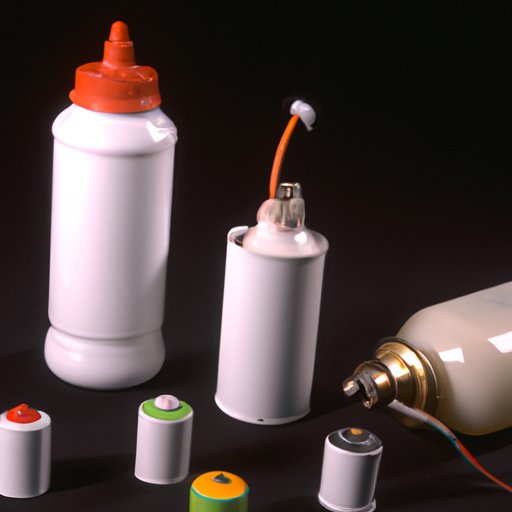
Introduction
Battery acid is a corrosive and hazardous substance that can cause severe damage to surfaces or objects. Accidents or aging batteries can lead to battery acid spills in different settings, and prompt action is required to ensure safety and prevent costly damage. It is, therefore, important to know how to clean up battery acid effectively and safely.
Causes of Battery Acid Spill
Battery acid spills can happen due to several reasons. Exposure to high temperatures or too much pressure can cause a battery to burst, leading to spills. Also, damage to a battery’s casing or terminals can cause the electrolyte inside the battery to escape. As a result, it is essential to understand the risks associated with a battery acid spill. Corrosion of metals, chemical burns, and other potential hazards can occur if not handled correctly.
Materials Needed to Clean Battery Acid
To clean up battery acid, you will need specific materials and equipment to ensure personal safety and effectiveness. Some of these items include gloves, eye protection, baking soda, water, and towels. Protective equipment is essential when handling battery acids to avoid accidental exposure to skin or the eyes. Baking soda is a useful component as it neutralizes the acid and provides a protective barrier over surfaces. Water and towels are essential for cleaning up the spill without spreading the acid to nearby surfaces and to wipe everything clean. It is important to keep in mind that proper disposal of the materials used for cleaning is necessary to avoid further environmental hazards.
Tips for Cleaning and Safety Precautions
When cleaning up a battery acid spill, there are specific safety precautions to keep in mind. First, remember to switch off any electronic devices or circuits, and disconnect the battery before cleaning. Wear gloves and eye protection to avoid exposure to the acid. Afterward, apply baking soda to the spill and let it sit for several minutes, allowing the acid to neutralize. Be sure to keep hands and face away from the area to avoid inhaling any toxic fumes. After a few minutes, rinse the affected area with water and wipe everything clean gently. Lastly, when disposing of the cleaning items, follow your local jurisdiction’s waste management guidelines to avoid environmental damage.
Preventing Battery Acid Spills
Preventing battery acid spills is another aspect to consider when handling batteries. Regularly inspecting the battery for any signs of wear and replacing the battery when necessary is an effective preventive measure. Follow the manufacturer’s instructions when handling and transporting batteries, including storing them upright and secured in place. It is also crucial to dispose of the batteries correctly to minimize any potential harm to the environment.
Different Types of Cleaning Methods
Various cleaning methods can be employed to clean up an acid spill. Each method has its own benefits and drawbacks, and some work better for specific surfaces than others. One popular method involves using baking soda as an alkaline neutralizer. Another method uses a mixture of hydrogen peroxide and baking soda to create a cleaning paste. Other methods include using a commercial cleaner or even lemon juice. After evaluating the benefits and drawbacks of each method, it is essential to choose the most appropriate method based on the spill’s severity and the type of surface.
Environmental Implications of Cleaning Battery Acid
As mentioned earlier, battery acid is a hazardous substance that can cause significant harm to the environment if not disposed of correctly. When cleaning up a battery acid spill, it is important to adhere to local waste management guidelines and dispose of the cleaning materials appropriately. It is also important to be mindful of the impact cleaning up battery acid might have, such as contaminated water runoff. While cleaning up the spill, consider containing the water used and dispose of it responsibly to minimize environmental damage.
Conclusion
Battery acid spills can be dangerous and costly, but understanding how to clean them up effectively is crucial. It is essential to collect all the necessary equipment before starting to clean and wear safety gear to avoid accidental exposure. Preventive measures can also be taken, such as regular inspections and proper battery handling techniques, to avoid spills in the first place. By following the steps provided in this article and exercising caution throughout the process, you can safely remove hazardous and corrosive battery acids. However, always remember to adhere to local waste management guidelines when disposing of materials used during the cleaning process.
Do you have any tips or suggestions for cleaning battery acid spills? Share your experiences and insights in the comment section below.




